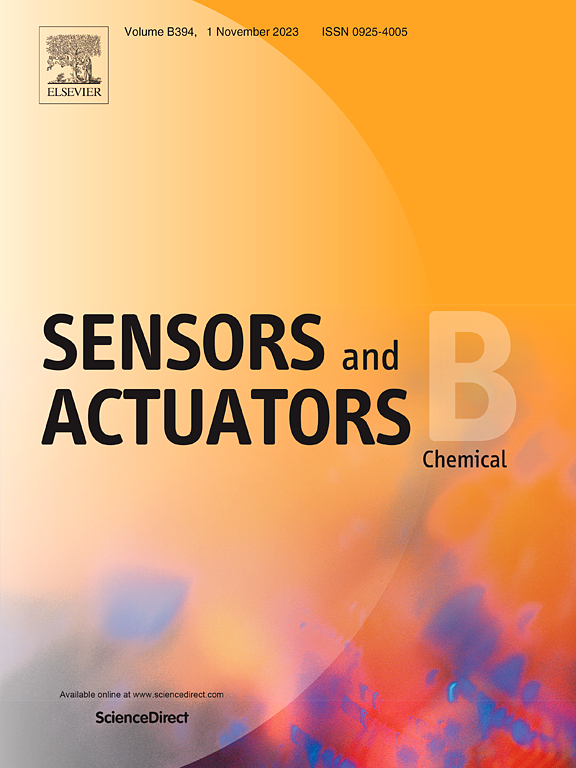基于au功能化CdGa2O4的三乙胺气体传感器用于鱼类新鲜度检测
IF 3.7
1区 化学
Q1 CHEMISTRY, ANALYTICAL
引用次数: 0
摘要
三乙胺(TEA)是一种挥发性有机化合物,具有可燃性、高毒性和氨样气味。由于TEA在化工生产中的广泛应用,开发一种高灵敏度、快速响应的TEA检测仪对环境安全和人类健康都具有重要意义。异质结和半导体氧化物在气体响应过程中的具体作用和动态演变尚未得到充分的了解。采用湿浸渍法制备了金纳米粒子修饰的CdGa2O4微球,并对其气敏性能进行了测试。基于1.8 au - cdga2o4的传感器具有更好的响应值(S=128),更短的响应/恢复时间(5/32 S)和更低的检测(1.54 ppb)。此外,鱼类新鲜度评估的实际实验证实,基于1.8Au-CdGa2O4的传感器在鱼类新鲜度测试中具有重要的实际应用潜力。本文章由计算机程序翻译,如有差异,请以英文原文为准。

Triethylamine gas sensor based on Au-functionalized CdGa2O4 for the practical detection of fish freshness
Triethylamine (TEA) is a volatile organic compound characterized as flammability, high toxicity and an ammonia-like odor. Due to its prevalent use in chemical production, the development of a highly sensitive and rapidly responding TEA detector holds significant importance for both environment safety and human health. Heterostructures have been shown to effectively enhance the sensitivity of sensors towards target gases, however the specific roles and dynamic evolution of the heterojunctions and semiconductor oxides remain inadequately understood during the gas response process. Herein, Au nanoparticle-modified CdGa2O4 microspheres were prepared by wet impregnation method and their gas sensing properties were examined. The 1.8Au-CdGa2O4-based sensor demonstrates a superior response value (S=128), a shorter response/recovery time (5/32 s) and a lower detection (1.54 ppb). Furthermore, practical experiments assessing fish freshness have confirmed that the sensor based on 1.8Au-CdGa2O4 has significant potential for real-world applications in fish freshness testing.
求助全文
通过发布文献求助,成功后即可免费获取论文全文。
去求助
来源期刊

Sensors and Actuators B: Chemical
工程技术-电化学
CiteScore
14.60
自引率
11.90%
发文量
1776
审稿时长
3.2 months
期刊介绍:
Sensors & Actuators, B: Chemical is an international journal focused on the research and development of chemical transducers. It covers chemical sensors and biosensors, chemical actuators, and analytical microsystems. The journal is interdisciplinary, aiming to publish original works showcasing substantial advancements beyond the current state of the art in these fields, with practical applicability to solving meaningful analytical problems. Review articles are accepted by invitation from an Editor of the journal.
 求助内容:
求助内容: 应助结果提醒方式:
应助结果提醒方式:


